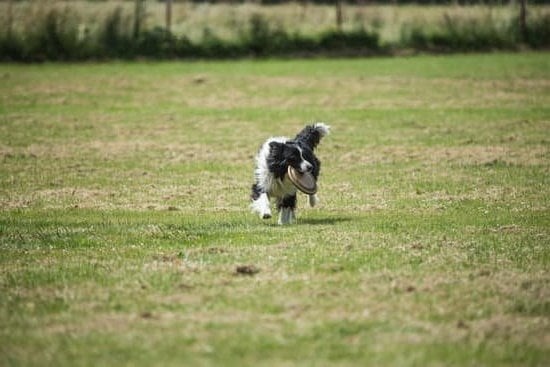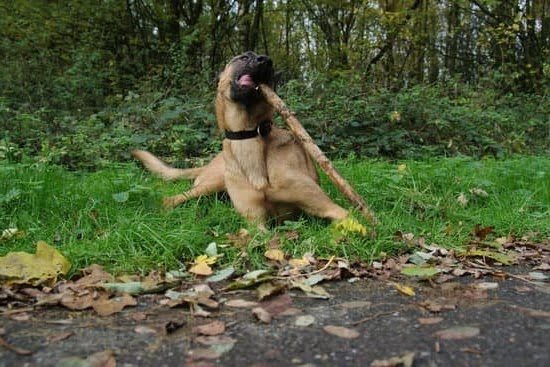Guide dogs play a crucial role in enhancing the quality of life for individuals with visual impairments. These remarkable animals provide independence, mobility, and companionship to their visually impaired handlers, allowing them to navigate their surroundings with confidence and ease. However, behind every well-trained guide dog lies an extensive training process that requires immense dedication, expertise, and financial resources.
For those who are visually impaired, guide dogs serve as more than just loyal companions; they are trusted guides that enable individuals to lead independent lives. From helping navigate busy streets and public transportation to locating specific objects or landmarks, these highly trained canines act as their handler’s eyes, offering a newfound sense of freedom and empowerment.
The journey to becoming a skilled guide dog begins at puppyhood and extends through months or even years of rigorous training. From selecting potential candidates with the right temperament and characteristics to specialized breeding programs aimed at producing sound and physically capable dogs, every step of the process is carefully crafted to ensure the best outcomes.
In this comprehensive article, we delve into the world of guide dog training. We’ll explore the step-by-step journey from selecting and raising potential guide dogs to the professional training provided by experienced trainers. We’ll also shed light on the duration and cost associated with bringing a guide dog from infancy through to its formal training.
Additionally, we will discuss various fundraising initiatives and sponsorship opportunities that help subsidize these substantial costs. Finally, we will examine organizations and resources that provide financial assistance for individuals seeking guide dog training.
Join us as we uncover not only how much it costs to train a guide dog but also how these incredible animals make an invaluable impact on the visually impaired community. By understanding the significance of this training process and its associated expenses, we can appreciate both its financial weight and immeasurable value in improving lives affected by visual impairment.
The Process of Guide Dog Training
Training a guide dog is a meticulous process that involves several stages, starting from the early days of puppyhood to the final stage of becoming a fully trained guide dog. This section will provide an in-depth description of the step-by-step journey that these remarkable dogs undergo to become trusted companions for visually impaired individuals.
The training process begins with selecting and raising potential guide dogs. Various organizations have rigorous selection criteria to ensure that only suitable candidates are chosen for training. Specialized breeding programs are also carried out to maintain specific traits such as intelligence, temperament, and physical health. Once selected, the puppies are placed with volunteer-based puppy raisers who play a vital role in their socialization and overall development.
After spending around 12-18 months with their volunteer foster families, the dogs enter professional training programs. These programs are conducted by experienced guide dog trainers who specialize in obedience training, guide work, and public access skills. The dogs are taught to navigate obstacles, follow commands, and respond reliably in various real-life situations.
Throughout the entire training process, it is crucial to remember that not all dogs successfully complete the program. Some may be better suited for other types of service work or require alternate career paths due to health or behavior issues. However, those who demonstrate exceptional skills and pass comprehensive assessments move forward towards becoming fully trained guide dogs.
As shown in the table below, the entire process of training a guide dog can take up to two years or more on average. The costs associated with this journey vary depending on factors such as location, organization, and individual circumstances.
| Training Stage | Average Duration | Cost Range |
|---|---|---|
| Puppy Raising Program | 12-18 months | $0 (volunteer-based) |
| Professional Training | 4-6 months | $20,000-$60,000 |
It’s important to note that the costs mentioned above cover only a fraction of the actual expenses involved. Organizations rely heavily on fundraising and sponsorship initiatives to subsidize the training costs. These efforts help ensure that guide dog training remains accessible to visually impaired individuals who greatly benefit from these canine companions.
In the next section, we will delve into the financial aspects of guide dog training, including various fundraising initiatives and the role of sponsorship in supporting these programs. Additionally, we will explore organizations and resources that provide financial assistance to individuals pursuing guide dog training, ensuring that cost is not a barrier for those in need.
Selecting and Raising Potential Guide Dogs
Guide dog training begins long before a puppy enters formal training. It starts with a careful selection process and specialized breeding programs to ensure that the best candidates are chosen for guide dog training. This section will delve into the rigorous selection process and the vital role of specialized breeding programs in producing high-quality guide dogs.
Selection Process
The selection process for potential guide dogs is extensive and thorough. It involves evaluating various factors such as genetic traits, temperament, health, and physical attributes. Guide dog organizations work closely with experienced breeding partners to ensure that only the most suitable canines are selected for training.
During the selection process, guide dog organizations consider factors such as the breed’s history, inherent characteristics, and genetic predispositions. They also assess if the puppy possesses qualities like intelligence, sociability, confidence, and adaptability – all crucial traits for successful guide dog work.
Specialized Breeding Programs
Specialized breeding programs play a pivotal role in producing top-quality guide dogs. These programs focus on selectively pairing potential parent dogs with desirable traits to enhance their chances of passing on these qualities to their offspring. Breeding partners collaborate with guide dog organizations to carefully match parent dogs based on genetics and temperament.
Additionally, these programs aim to diversify gene pools and minimize genetic predispositions to specific health issues. They carefully monitor breeding stock for hereditary conditions that could impact a potential guide dog’s health or suitability for training.
By combining an intensive selection process with specialized breeding programs, guide dog organizations can maximize the chances of producing puppies who possess the necessary traits for successful guide work while ensuring they have sound physical health. Through this commitment to quality control before formal training begins, future guide dogs have a solid foundation upon which their training can be built.
Puppy Raising Program
The puppy raising program is a critical component of guide dog training that plays a crucial role in socializing and preparing guide dog candidates for their formal training. This volunteer-based program allows individuals or families to take on the responsibility of raising and caring for future guide dogs from puppyhood to about 12-18 months of age.
During this period, the main goal of the puppy raisers is to provide a nurturing and structured environment where the puppies can learn basic obedience commands, proper manners, and essential socialization skills. Puppy raisers follow a set of guidelines provided by the guide dog organizations and work closely with professional trainers who offer support and guidance throughout the process.
Volunteer puppy raisers play an integral role in exposing the young dogs to various environments, sounds, people, and experiences, allowing them to develop confidence while being well-socialized. They take their puppies to shopping centers, restaurants, public transportation systems, parks, and other public places where they encounter different situations that they might face as working guide dogs in the future.
Puppy raisers are responsible for teaching their puppies foundational skills such as walking calmly on a leash, sitting politely when greeted by strangers, avoiding distractions like food or other animals when commanded to do so, and responding reliably to basic commands. Additionally, they also expose the puppies to different surfaces like stairs or escalators and teach them how to navigate obstacles safely.
Overall, the dedicated efforts of puppy raisers significantly contribute to shaping well-rounded guide dog candidates who are ready for their advanced professional training. Without these volunteers’ commitment and love for these puppies-in-training, it would be impossible to produce highly skilled guide dogs that can ultimately transform lives within the visually impaired community.
Professional Training
Obedience Training
Professional guide dog trainers undergo extensive training to develop the necessary skills and expertise to transform young puppies into well-behaved and obedient guide dogs. Obedience training is a crucial component of the professional training process, as it provides the foundation for good behavior and ensures that guide dogs can follow commands reliably. Trainers focus on teaching guide dogs basic obedience commands such as sit, stay, come, and lie down.
During obedience training, trainers use a combination of positive reinforcement and reward-based techniques to encourage desired behaviors. They work closely with each individual dog to address specific challenges or behavioral issues that may arise. The goal is to create a strong bond between trainer and dog, fostering trust and cooperation.
Guide Work Training
Guide work training is the core aspect of professional guide dog training. This phase focuses on teaching guide dogs how to navigate various environments safely while guiding visually impaired individuals. Trainers introduce guide dogs to various routes, including urban areas, crosswalks, stairs, elevators, and public transportation settings.
Through repetitive practice and positive reinforcement techniques, trainers teach guide dogs advanced mobility skills such as obstacle avoidance, stopping at curbs, finding landmarks or objects upon command (e.g., “find the door” or “find the elevator”), and responding appropriately to traffic signals. Guide work training also includes teaching dogs how to intelligently disobey when there may be perceived danger present.
Public Access Skills
One critical aspect of professional guide dog training involves socializing the dogs in real-life scenarios where they will be working alongside their visually impaired handlers. Public access skills are trained to ensure that guide dogs remain calm, focused, and well-behaved in various public settings such as restaurants, stores, public transportation vehicles, airports, and other crowded places.
During this stage of training, handlers expose the dogs to different environmental stimuli, noises, and distractions they may encounter while on duty. This exposure helps guide dogs develop the necessary resilience and adaptability needed to perform their duties effectively. Trainers also work closely with visually impaired individuals to practice their communication and teamwork skills, ensuring a seamless partnership between the guide dog and its handler in real-life situations.
Professional training programs dedicate significant time and effort to these critical aspects of guide dog training. They strive to ensure that guide dogs possess the necessary obedience, guide work, and public access skills required to provide invaluable assistance and support to visually impaired individuals in their daily lives.
Training Duration and Cost
The training duration of guide dogs can vary depending on various factors, such as the breed, individual temperament, and the specific needs of the visually impaired individual they will be assisting. On average, guide dog training can take anywhere from six months to two years. During this time, the dogs undergo intensive training to master a wide range of skills and behaviors.
The training process begins with basic obedience training, which includes commands like sit, stay, and heel. This foundational training is essential for creating a well-behaved and disciplined guide dog. Once the dogs have mastered these basic commands, they move on to more advanced skills specific to their role as a guide dog.
Guide work training is a crucial aspect of their education. Dogs are taught to navigate different environments safely while avoiding obstacles, determining changes in elevation like curbs or stairs, and recognizing potential dangers that may pose a risk to their handler. They learn how to respond to verbal cues and commands from their handler and act independently when necessary.
In addition to these skills, guide dogs also receive public access training. They learn how to remain calm and well-mannered in various public settings such as restaurants, stores, or public transportation. This type of training ensures that the dog can accompany its handler seamlessly in everyday situations without causing any disruptions.
The cost associated with guide dog training typically covers various expenses incurred throughout the entire process. These expenses include breeding programs, veterinary care for both puppies and adult dogs, food supplies during training period including specialized diets if needed by certain breeds or individual health circumstances), equipment such as harnesses or leashes necessary for guiding work exercises). Additionally,president trainers ‘ salaries, administrative costs involved in managing the program).
Moreover, It is worth noting that there are nonprofit organizations dedicated to providing financial assistance for individuals seeking guide dog training. These organizations offer scholarships or grants that help cover some or all of the costs associated with acquiring a trained guide dog. Some organizations may also provide ongoing support to ensure that visually impaired individuals have access to the resources they need to maintain their guide dogs’ welfare and training.
Fundraising and Sponsorship
Guide dog training is an extensive and costly process that requires significant financial resources. In order to cover these expenses, organizations rely on fundraising initiatives and sponsorship programs to support the training of guide dogs for visually impaired individuals.
One common fundraising initiative is through community events such as charity walks, runs, or auctions. These events not only raise funds but also increase awareness about the importance of guide dogs in assisting visually impaired individuals. Additionally, many organizations partner with local businesses for sponsorships or donations. This can involve monetary contributions or in-kind support, such as providing supplies or services needed for the training program.
To further supplement their funding, guide dog organizations often offer various sponsorship opportunities for individuals or companies who wish to contribute. There are different levels of sponsorship available, ranging from sponsoring a specific puppy’s training to supporting the overall operational costs of the organization. Sponsors may receive recognition on the organization’s website or promotional materials as a gesture of appreciation for their contribution.
In addition to these fundraising initiatives and sponsorships, many guide dog organizations also rely on generous donations from individuals and foundations. These donations play a vital role in covering the ongoing costs associated with breeding, raising, and training guide dogs.
Overall, fundraising initiatives and sponsorships are crucial in ensuring that guide dog training programs can continue providing highly skilled assistance animals to visually impaired individuals. By actively engaging with communities and seeking financial support from sponsors and donors, these organizations can provide crucial independence to those who need it most.
Financial Assistance for Guide Dog Training
Guide dog training is a crucial process that helps visually impaired individuals gain independence and navigate the world more confidently. However, the cost of training a guide dog can be significant, making it difficult for some individuals to afford. Thankfully, there are organizations and resources available that offer financial assistance in the form of scholarships, grants, and other aid programs.
One prominent organization that provides financial aid for guide dog training is the Guide Dog Foundation. They offer a scholarship program called the “William Lafferty Memorial Scholarship” which provides financial assistance to individuals who meet certain criteria. The scholarship covers a portion of the costs associated with training a guide dog, making it more accessible to those who may not have otherwise been able to afford it.
In addition to scholarships, there are also grants available specifically for guide dog training. The Assistance Dog United Campaign (ADUC) is an initiative that offers grants to help offset the costs of service animal training. This includes funding for both personal dogs and those trained through accredited programs like guide dogs.
Furthermore, several non-profit organizations dedicated to assisting people with visual impairments provide financial aid for guide dog training. The American Council of the Blind (ACB), for example, offers scholarships specifically for guide dog users, helping to alleviate some of the financial burden associated with training.
Overall, these organizations and resources play a vital role in ensuring that individuals seeking guide dog training have access to necessary financial assistance. Through scholarships, grants, and other aid programs, they help make this life-changing opportunity more affordable and accessible to visually impaired individuals who could greatly benefit from having a guide dog by their side.
| Organization | Type of Financial Assistance |
|---|---|
| Guide Dog Foundation | Scholarship (William Lafferty Memorial Scholarship) |
| Assistance Dog United Campaign (ADUC) | Grant |
| American Council of the Blind (ACB) | Scholarship |
Economic Benefits of Guide Dog Training
Guide dog training not only brings immense value to the visually impaired community in terms of increased independence and mobility, but it also yields significant economic benefits. For individuals who are visually impaired, guide dogs can drastically reduce the costs associated with their daily lives and improve their overall quality of life.
One of the key economic benefits of guide dog training is the reduced reliance on other forms of assistance or support. With a well-trained guide dog by their side, visually impaired individuals can navigate their surroundings independently and safely. This means they may require less human assistance or paid services, such as sighted guides or transportation services. By eliminating or minimizing these costs, guide dogs help visually impaired individuals save money in the long run.
Additionally, guide dogs can lead to increased productivity and employment opportunities for individuals with visual impairments. With a trustworthy companion by their side, people who are blind or visually impaired can confidently travel to and from work, participate in meetings or conferences, and navigate unfamiliar environments within their workplace. This increased independence allows them to seek employment in a wider range of industries and roles, thereby enhancing their financial stability and reducing reliance on government financial assistance programs.
Furthermore, guide dog training has been shown to contribute positively to mental health outcomes for visually impaired individuals. Dogs provide companionship, emotional support, and social interaction that can have a profound impact on an individual’s overall psychological wellbeing. Improved mental health can lead to increased resilience and motivation for employment or educational pursuits, fostering economic independence and success.
Conclusion
In conclusion, guide dog training plays a crucial role in improving the lives of visually impaired individuals. The process of selecting and training guide dogs is meticulous, starting from specialized breeding programs to ensure the best candidates. From there, the puppies go through a volunteer-based puppy raising program, where they are socialized and prepared for formal training.
The professional training that guide dogs undergo is comprehensive, covering obedience, guide work, and public access skills. This ensures that they are equipped with the necessary abilities to safely navigate their visually impaired handlers through different environments. While the duration of training can vary, it requires a significant amount of time and effort.
Despite the financial considerations involved, including costs incurred throughout the entire training process, fundraising initiatives and sponsorship play a vital role in subsidizing these expenses. Various organizations also provide financial aid, scholarships, or grants to individuals seeking guide dog training. These resources aim to make this life-changing opportunity more accessible to those who need it.
Ultimately, the economic benefits of guide dog training extend far beyond just financial considerations. By providing increased independence and mobility for visually impaired individuals, these dogs significantly improve their quality of life.
The immeasurable value that guide dogs bring to the visually impaired community cannot be overstated – they are not simply pets but trusted companions who provide lifelong support and assistance. Guide dog training is an investment that pays back tenfold in terms of independence, freedom, and empowerment for those who rely on them every day.
Frequently Asked Questions
Why is it so expensive to train a guide dog?
There are several factors that contribute to the high cost of training a guide dog. Firstly, it requires a significant amount of time and effort from highly trained professionals who specialize in guide dog training. These trainers need to have expertise in working with both dogs and visually impaired individuals, which adds to their specialized knowledge and experience.
Additionally, the training process itself is extensive and involves various stages such as socialization, obedience training, specific task training, and public access training. Each stage requires meticulous attention to detail and individualized instruction for each dog based on their unique personality and needs. Moreover, maintaining the well-being of the guide dogs during their training period also incurs costs such as food, veterinary care, and general care expenses.
How long does it take to train a guide dog?
The duration of guide dog training can vary depending on various factors such as the organization or program involved, the individual dog’s temperament and abilities, as well as the specific needs of the visually impaired person who will receive the guide dog. On average, it can take anywhere from several months to up to two years to fully train a guide dog.
This extended length of time is necessary to ensure that each dog receives thorough instruction in all aspects of being a reliable guide for their visually impaired handler. It involves numerous stages like basic obedience training, specialized task training tailored to the handler’s needs (such as navigating obstacles or finding specific objects), and extensive practice in real-world situations to solidify their skills.
What is the average cost of a guide dog?
The average cost of a guide dog can vary significantly depending on different factors including location, organization or breeder, breeding program quality, and other associated services provided by the organization such as aftercare support or additional training sessions if needed. On average, acquiring a trained guide dog from a reputable organization may cost anywhere between $20,000 to $50,000.
However,it is important to note that these costs often cover not only the actual training expenses but also encompass various other expenses throughout the dog’s life such as breeding, veterinary care, food, equipment, and ongoing support for both the guide dog and their visually impaired handler. Additionally, some organizations provide guide dogs free of charge to applicants who meet specific financial criteria or through charitable donations from supporters.

Welcome to the blog! I am a professional dog trainer and have been working with dogs for many years. In this blog, I will be discussing various topics related to dog training, including tips, tricks, and advice. I hope you find this information helpful and informative. Thanks for reading!





